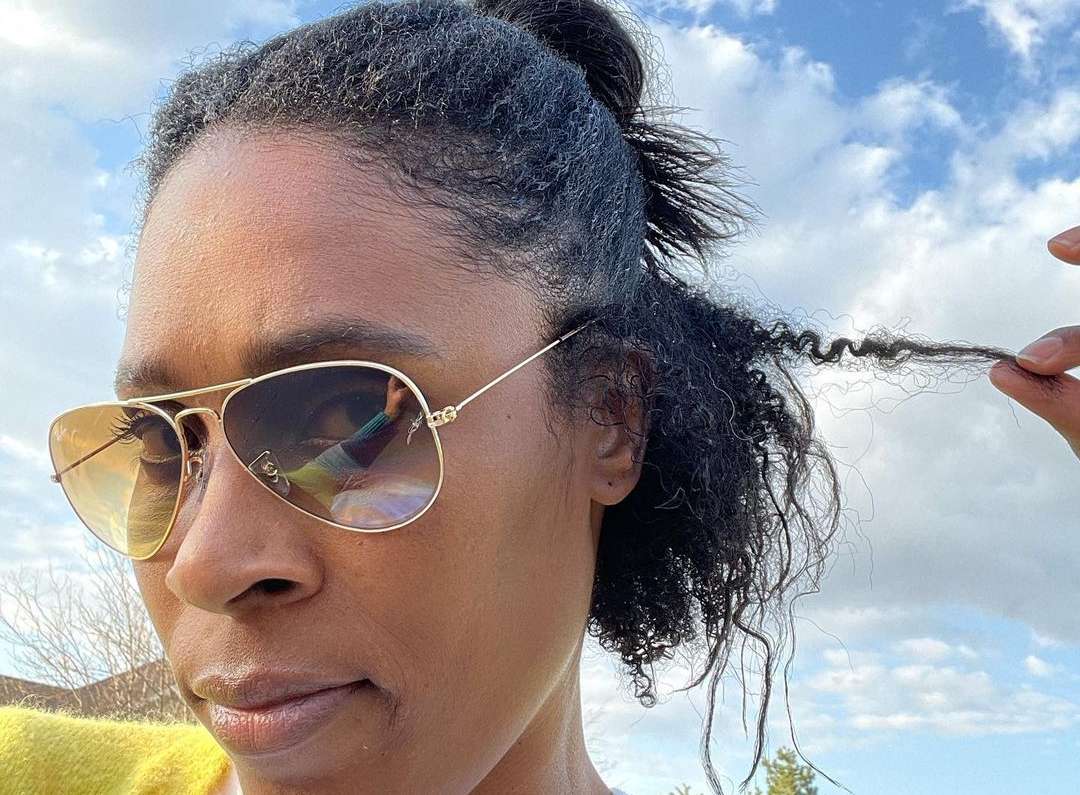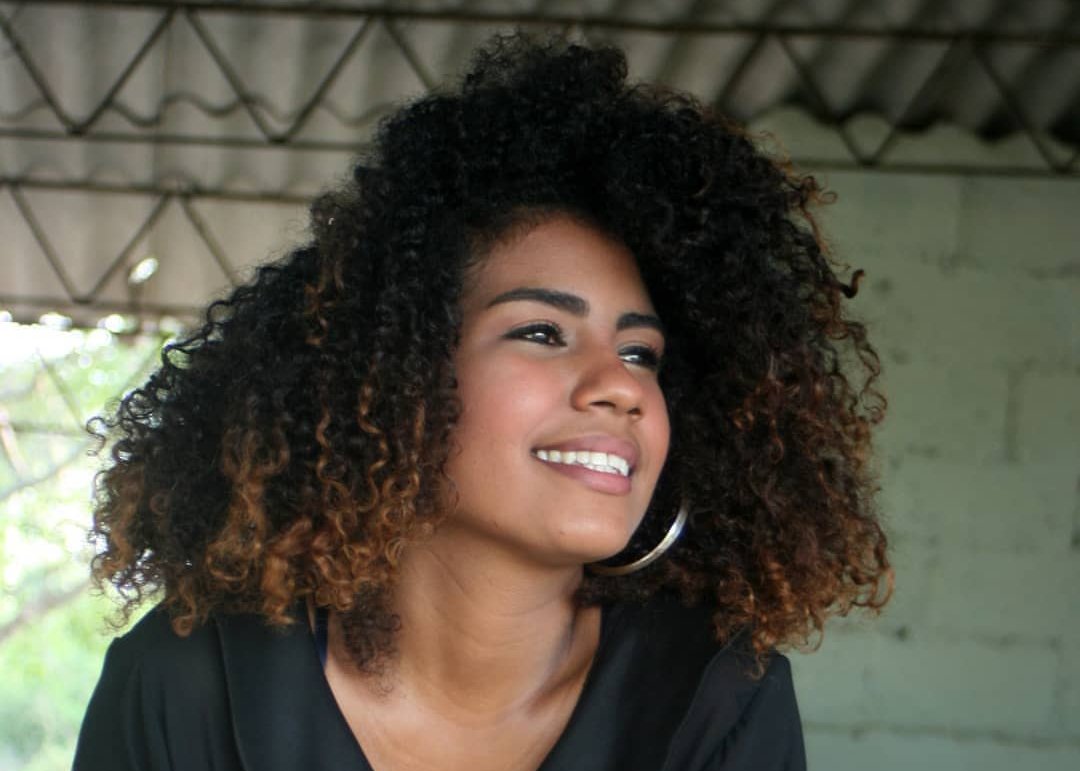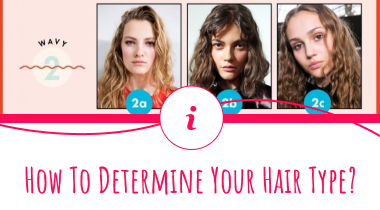Transitioning to Natural Hair: Ultimate Guide to Growing Out Your Relaxer
If you feel like you have damaged hair due to chemical relaxing and you want to get information about long-term transitioning without doing the big chop, please take some time to explore this article.
We have all of the transitioning hair care tips you could want including the best information on long-term transitioning. We have special tips for deep conditioning, how to grow long hair, the best transitioning products, and tons of ideas for natural hairstyles.
Transitioning to natural hair can be very easy and also fun if you have the right hairstyles and the correct knowledge about black hair care.
Once your new growth begins to take over you can still go for a long time before you cut off relaxed ends. Our guidelines are appropriate for all hair types 4a, 4b, 4c, 3a, 3b, and 3c. No big chop required!
Natural hairstyles are important when you want to transition from relaxer on 4a or 3c hair. After you have allowed your hair to grow out some and you have plenty of new growth, you can cut off relaxed hair, deep condition with coconut oil or other appropriate conditioners, and grow long hair naturally.
No big chop is required for beautiful results with long-term transitioning or on damaged hair. Black hair care and going natural do not have to be challenging or mysterious as long as you know what to do.
When did you decide to go natural and why?
My best friend big chopped 3 months before I decided to transition. I immediately was fascinated by her hair and proud that she was embracing the hair she was born with. So July 2019 I received my last perm and I big chopped December 28th of the same year. It’s been more than a year since I made my decision and went fully natural. I love my curls and can’t keep my hands out my hair.
4 Reasons to Stop Chemically Straightening Your Hair and Transition to Natural
If you are still trying to find reasons for transitioning to natural hair look no further.
I do not take anything away from anyone who wants to style their hair in whatever way they want to style it. I had fun with chemically straightened hair and I liked the way that my hair looked.
What I did not like was the expense, the toll it took on my hair and scalp, and whatever unknown damage I was doing to my lungs and body with those chemicals. If you are considering transitioning from relaxed to natural hair and going natural here are some of the reasons why it might be a good decision for you:
1. To achieve healthier hair and scalp
Let’s face it. Chemical hair straightener is made up of some extremely harsh chemicals which can damage your scalp causing dryness, dandruff, and other unpleasant scalp conditions. Let’s not even talk about the scabs you get from getting the straightener burns.
If you haven’t seen Chris Rock’s “Good Hair” you should definitely watch it if only to see the scenes about hair straightener. It will blow you away. I can imagine that the fumes of the chemicals aren’t exactly great for us either.
And when I would get my hair straightened, I would always swear that I could feel the chemicals seeping into my brain and it made me very sleepy. Maybe that was just my imagination.
2. To end the abuse
Speaking of burns… I still get a little chill when I think of that burning feeling waiting for my stylist to just finish off that last section.. .and oh I want to let it stay on as long as I can stand it so that my hair actually gets straight!
We’ve all been there. Going natural means never having another chemical burn again. And you can scratch your head whenever and wherever you feel like it!
3. To save money
If you get your hair straightened at a salon, I don’t need to explain the costs involved. If you do it yourself, its somewhat less expensive, but there’s always the cost of the necessary relaxers and neutralizing shampoos. Once you go natural and get a good stock of natural products, your monthly hair costs should be close to zero.
4. To experience the spiritual gratification of being you
This one is a little more subjective, but there is something wonderful and empowering about experiencing your full natural self. I will always argue that weaves, wigs, and hair straightening are as much of African-American culture as are afros, locs, and braids because all of the styles come from our cultural creativity, artistry and ingenuity.
But walking with a fully natural head of hair can’t help but give you a sense of authenticity and pride. There’s a certain amount of freedom in not trying to alter anything which feels great.
Transitioning from Relaxed to Natural: General Regimen
When you are transitioning, there is definitely a learning curve on how to care for your “new growth” texture as well as how to manage two textures combined together.
The process I’m describing here is a general wash and care regimen helping you to figure out the best way to wash, detangle, condition, and style. As 4c hair gets longer, the tangles become incredible and the sheer volume of hair can get overwhelming. Whenever I wash my hair I just think “Whew!” it’s a lot of hair.
You can do this in the shower or you can do it over the sink. Having a spray nozzle or removable shower head really helps.
- Thoroughly wash/rinse hair in sections. It makes it easy to part your hair off into about 6-10 sections and keep them separated with butterfly clamps.
- Apply the deep conditioner to thoroughly rinsed sections.
- After all sections are conditioned, comb through each section with the wide-tooth comb to detangle.
- Put on a plastic cap and allow hair to deep condition for 15 – 30 minutes. The longer the better.
- Rinse hair thoroughly again removing the sections as you go.
Now it is cleaned and conditioned. The next steps depend on what you want to do:
- High Puff Style
- Stretch it Out
High Puff Style
This is a great go-to style for a transition from relaxed to natural hair once your hair has grown to about 6 inches or more. It’s a great everyday look that can be done relatively quickly.
You can change it up by making the “pouf” bigger or smaller or more or less curly.
After washing and conditioning the hair:
- Apply a thick and creamy leave-in conditioner/moisturizer to all of the hair.
- Apply jojoba oil or another oil on top of the leave-in conditioner. – Remember you want to moisturize moisturize moisturize.. then you want to apply oil to seal in the moisture.
- Apply a heavy gel to the front sides and back to “slick” the hair into a ponytail.(note: I’ve been experimenting with this step, and I’ve found that the gel isn’t actually necessary as long as I apply a nice oil and tie the front down with a good headband. The liquid jojoba oil works great, or shea butter. )
- Hold hair with an elastic band. (if you have the right kind, these should not break your hair, but make sure it’s not too tight – don’t overlap the elastic. Just put it on in one ‘circle’ ).
- Wrap with a scarf. I also use cut-up tights or stockings as hair wraps. Like a stocking cap, they really get the job done.
- Allow to dry.
- Leave the ‘pouf’ as is, or you can do a twist out to stretch it out!
Stretch it Out
Once you get well into transitioning from relaxed to natural hair, you might be astonished to find out how much your hair “snaps back” when it is wet. You can lose up to 75% of your length because of the tightness of your curls or kinks.
After you have washed and conditioned your hair you might want to give it a bit more length, especially if you have a very tight curl, and also lighten it up a bit.
Best Ways to Stretch Your Hair:
- Roller-Set
- Set on Pipe Cleaners (also known as Fuzzy Sticks)
- Twist Out
- Braid Out
All of these methods involve the same basic technique. Condition the hair with a leave-in conditioner, braid, twist roll, or wrap the hair and allow it to dry. The specific method that you choose depends on the style you want and the length of your hair.
All of these are also great processes to use when you still have relaxed ends during your transitioning phase. They also allow you to do targeted moisturizing on your hair.
Stretch It
If you started this process from the High Pouf, you want to do the twists and curls in the pouf.. it is easier to keep it pulled back nicely if you leave it pulled back with the scarf while you twist it.
You can also start this process with your hair just out so that you get a pretty curly/wavy style when you finally take it out at the end.
- Towel dry the hair so that it is not sopping wet. You want it as dry as possible while still damp.
- Take a section of hair that is about 1.5 inch square. You can play with the size of the sections to achieve different textures.
- Apply moisturizer and oil to the section. – You will have to play with the amounts to see how much your hair needs, and how much you can put on so that your hair won’t take forever to dry.
- Separate the hair into two parts then twist the parts together. This is a two-strand twist. Make sure you apply an extra dose of moisturizer on the end, and smooth the very ends of the hair into a nice coil.
- Affix a perm rod at the end of the twist or braid. If you are using pipe cleaners you can wrap your hair around the end of the wire and bend it over.
- Continue this process until all of your hair is twisted.
- Allow the hair to dry completely. My hair usually takes at least an hour sitting under the dryer.
- Once the hair is completely dry, remove the rollers then gently separate the twists.
- You can also do this process if your hair feels dry and needs a good moisturizing treatment, but you don’t want to wash it. Make sure you get the ends nicely coiled with moisturizer when you touch it up.
Pipe Cleaners/Fuzzy Sticks
If your hair is long you might find that it is difficult to control it after you have it twisted or stretched. Pipe cleaners are wonderful for this because they allow you to keep your hair stretched out to a full length and secure it. You can also clip the hair to the pipe cleaner so that it stays stretched out and in place.
They are also nice because you can lay down or maybe even sleep with them in since they are soft. They don’t create impossible sleeping conditions as rollers and clippies do. You can also use the pipe cleaners to simply roll or twist your hair.
Transitioning to Natural Hair Tips
Embrace What God Gave You
Going natural is more than just growing out your natural hair. Its about bringing about a shift in your way of thinking about your hair and yourself. If you have been chemically straightening your hair for a very long time, your natural texture might be a shock and a surprise.
Remember that your hair is yours and yours alone. You’ll never be able to grow out hair that is like anyone elses’ so there is no point in getting caught up in what anyone else can do with their hair or wishing that you had a certain texture that you don’t have.
Learn to love what is yours and how to work with it, and the transitioning process will go so much more smoothly for you. Take a look at this post about embracing your natural hair.
Moisturize and Deep Condition Regularly
Keeping your hair moisturized and deep conditioned is essential to the health of your hair. When your new growth is soft and your relaxed hair is nourished, it won’t break off.
Many people going through a hair transition say that their new growth is unmanageable and coarse. If you are really having trouble with the competing textures, the best way to handle it is through conditioning and moisturizing.
You will probably notice that your hair is more manageable and just feels better after adopting a consistent conditioning schedule.
Leave it Alone
Try to manipulate your hair as little as possible. Combing and brushing aren’t great for kinky/curly hair.. you want to style it with your fingers most of the time.
When you do comb your hair to detangle it, use a very wide-toothed comb. Don’t pull it back into tight ponytails or braids.
Wear Protective Styles
Growing out relaxed hair, wear protective styles such as braid-outs, rod sets, twist-outs, flat twists, braids, extensions, or buns. Make sure that you don’t pull your hair back too tightly or else you can end up pulling out all of your precious new growth.

Hair transitioning journey of lovely @rosie_curlycrown
Black Hairdressing Styling Products May Cause Medical Problems
Of ethnic groups, African-American women are the most focused on hair care. The Black American good hair care business has been a lucrative business for decades because African-American women are very invested in manipulating their natural hair.
A history of the negative stigma associated with curly, frizzy, kinky, or nappy hair causes women with anything less than straight hair to search out chemical ways to modify their hair texture. Lye, sulfates, formaldehyde, and other harmful ingredients found in the products may be harmful to the scalp, lungs, and total health and wellness.
Numerous studies have discovered that relaxers and a few of the other chemical-based products that ethnic women use could possibly be damaging to their health. Furthermore, styling practices, products, and methods may also cause stress on the scalp and hair, and cause additional ailments.
How to take care of transitioning hair: FAQ
Are wraps good for transitioning to natural hair?
Well.. yes and no. The traditional wrapping process is where you comb or brush your hair around your head trying to get it as flat and smooth as possible.
The process of combing or brushing through your hair in that way could be damaging especially to the delicate line of demarcation where natural hair meets relaxed hair.
Also, your kinky/curly hair will probably not submit to the wrapping process as well as you might like. It is better to start getting used to your natural texture and try more textured styles such as braid-out or twist-out styles.
How often should I wash my transitioning hair?
This one speaks again to the moisture issue. It’s a delicate balance, you want to wash natural hair often enough so that your hair gets plenty of watering like a beautiful flower. However, you don’t want to wash too much and strip out your natural oils. Once a week is good. Twice a week is ideal. However, I sometimes go for 2 weeks or more because I don’t feel like doing the work.
If you wash often, try not using shampoo every time. And always make sure that you are using a healthy shampoo for relaxed hair that does not contain harmful chemicals. It’s also great to rinse or wet your hair daily if you can.
But do you ever wonder why people with straight hair get so much growth so fast? One reason is that they wash more often than we do.
What is the best way to blow dry natural or transitioning hair?
Like flat ironing, blow-drying your transitioning or fully natural hair is a project you might want to take on every once in a while to achieve a certain look. Overall, it’s best to avoid heat on your hair as much as possible.
However, if you apply the proper products and techniques, you can get away with occasional blow-drying without causing too much damage.
Sometimes it is nice to blow dry your hair before doing a twist-out style to get a bigger and more sleek look and also to help it dry faster. You just need to modify the types of products you put in to make sure that you don’t add back too much water and cause all of your blow-drying work to be for nothing.
What is the best way to transition without doing the big chop?
When you are transitioning to natural hair, there is definitely a learning curve on how to care for your “new growth” texture as well as how to manage two textures combined together.
The simple answer is by using protective hairstyles. If you have the right products and good technique, you can transition for a very long time.
What is the best way to keep my natural hair moisturized?
When you are transitioning from relaxed to natural hair, there is definitely a learning curve on how to care for your “new growth” texture as well as how to manage two textures combined together.
I think one of the most shocking things about discovering your natural hair is when it turns into a dry, brittle, unmovable pouf and it seems like there is nothing that can be done with it. At this point just remember, water is your friend!
Moisturize with water first and then add a moisturizer. Put a light oil such as jojoba, shea, or olive oil to seal in the moisture. After this, you can do a twisted or braided style to add a wave or texture to your hair. Braiding or twisting while wet also allows you to retain more of the moisture as your hair dries.
If you can’t do this every day, make sure you don’t go for more than 3 or 4 days without applying some moisture and oil to your hair.
Moisture is also the answer to how to keep your natural or transitioning hair healthy.
How do I maintain a long-term transition?
The best way to sustain a long-term transition is to keep your hair moisturized and protected. A great process you can do to moisturize is to do the water, moisture, oil routine to individual sections of hair as you twist them.
The twists can be any size you want, but smaller twists will be better moisturized. This is a process that I use before bed to give my hair some hydration as I sleep.
If you are careful not to use too much water and moisturizer, your hair should also dry relatively quickly, and you can have a great style the next day.
Other things to make sure of are to:
- trim or get your hair trimmed on a regular basis (every 6 – 8 weeks);
- avoid too much combing, brushing, and manipulation;
- wear protective styles often and be sure to moisturize while your hair is in the style.
Do you roll wet or dry transitioning hair?
You can roll your hair wet or dry, however, it is always better for your hair to do a roller set on wet hair after it has been washed. This is because your hair does not have to endure the stress of drying, regardless of how you dry it.
One of my favorite styles, though, is to blow dry my hair and then do a roller set or twist out. Especially if the hair is shorter, this gives a little more length and shine.
When you roll hair wet it comes out more tight to the head, but it usually also comes out shinier and with more body. Try different methods to find out what works best for you.
Also read:
- Silk Press Vs Flat Iron
- Best Hair Growth Oils for Black Hair
- Hair Botox Treatment – All You Need to Know
- How To Flat Iron Natural Hair
- How to Co-Wash Natural Hair
Conclusion
Visit black hair forums, other hair care forums and read as many natural hair care tips and transitioning hair care tips as you can find. There are tons of transitioning products for hair just like yours.
Just do your research on how to do a successful black hair transition. Search for terms such as transitioning to natural hair, growing out relaxed hair, hair transition, or transition relaxed to natural to find the best tips and advice.
Share your experience and thoughts on going natural in the comment section below!
References:
- Everything You Want to Know About Permanent Hair Straightening – https://www.healthline.com/health/beauty-skin-care/permanent-hair-straightening
- ‘Relaxers’ damage hair: Evidence from amino acid analysis – https://www.academia.edu/19757261/_Relaxers_damage_hair_Evidence_from_amino_acid_analysis
- 21 Protective Styles Perfect For Transitioning To Natural Hair – https://www.refinery29.com/en-us/easy-natural-hairstyles
- How to Roller Set Natural Hair, According to a Natural Hair Expert – https://www.byrdie.com/tips-on-how-to-roller-set-black-hair-400454
Table of Contents
ToggleAllyson Carter
Ally is a professional hairstylist with more than 6 years of experience, but hair has been her passion since early childhood. Here, at Hair Spies, she blogs about all things hairdressing, hair tools, and everyday hair care. Read more about Allyson here.










